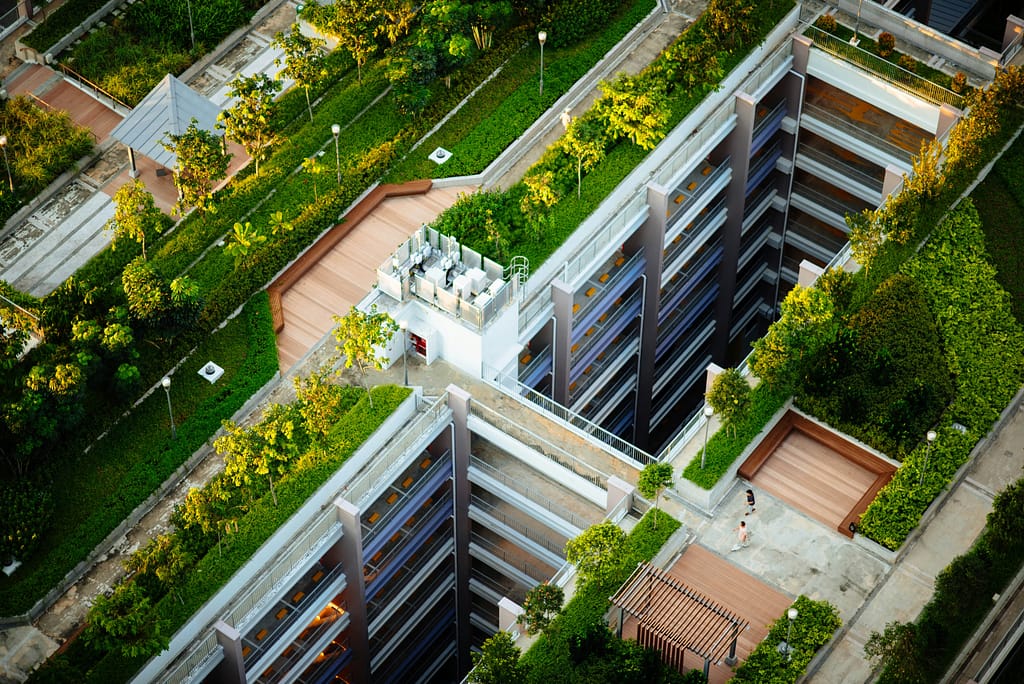Spatial needs and requirements for the circular economy in the North Sea Canal area
A Strategic analysis of the spatial impact of the transition from a linear to a circular economy in the North Sea Canal Area
This project explores the spatial impact of transitioning from a linear to a circular economy in the North Sea Canal Area (NZKG). Commissioned by the Province of North Holland and executed by Ecorys and Metabolic, the study aims to provide qualitative and quantitative insights into this transition. The key focus is on understanding the spatial-economic situation, identifying uncertainties, developing future scenarios, analyzing the spatial impact of these scenarios, and translating findings into actionable strategies for stakeholders.
- Client: Provincie Noord-Holland, Port of Amsterdam, Projectbureau NZKG, Gemeente Amsterdam
- Partner: Ecorys
- Date: 2023
The primary challenge is to understand and manage the spatial impact of the transition to a circular economy in the North Sea Canal area, a crucial economic hub for the Amsterdam Metropolitan Area. The transition involves significant changes in material flows, industrial activities, and spatial requirements, necessitating strategic planning and policy development to accommodate new circular activities while balancing economic growth, sustainability, and spatial constraints.
In this research project we adopted a four phase approach.
- Current State Analysis: Evaluating the current economic structure, spatial distribution, and material flows in the NZKG.
- Scenario Development: Creating four future scenarios based on global trade growth and geopolitical stability to foresee potential developments in circular economy practices. Engaging stakeholders in envisioning four possible scenarios, helping to outline strategic directions and spatial requirements for circular economy activities.
- Spatial Impact Assessment: Linking strategic choices to circular economy activities and calculating their spatial implications up to 2050.
- Policy Recommendations: Developing actionable strategies and policy measures to spatial planning for the circular transition, including “no-regret” measures applicable across all scenarios.
Material Flow Analysis: Highlighted the dominant role of the manufacturing industry, particularly Tata Steel, in the region’s material consumption.
Four future scenarios: The four scenarios are characterized by the degree of geopolitical stability and the rate of growth of global trade. Scenario I (Green growth) is characterized by growing global trade and a high degree of geopolitical stability, which allows the development of a global, green circular economy. In scenario II (Limits to growth) a stable world politics is committed to achieving climate goals and the circular economy. Therefore, this scenario deliberately chooses less consumption and use of goods with more sustainable design. Geopolitical instability in scenario III (Reluctantly shrinking) coincides with shrinking world trade. In contrast to the Limits to Growth scenario, this is not a deliberate choice, but a consequence of geopolitical instability. Scenario IV (Strategic mindset) is characterized by geopolitical instability and growing global trade, with initially a continuation of business-as-usual in terms of economic growth. Because of geopolitical instability, trade relations are becoming more volatile and based on short-term gains. A strategic zero-sum mentality prevails.
Quantifying spatial needs: We quantified and calculated the four development scenarios to produce a projection of future demand for spatial needs. The results of our calculations are plotted against the baseline scenarios “Cautious” and “Favorable” alternatives prepared by the Economisch Instituut voor de Bouw on behalf of the Dutch Ministry of Economic Affairs and Climate.
Strategic Recommendations: Proposed a strategic transition agenda, efficient land use strategies, and a circular issuance policy for new land parcels. Emphasized the importance of infrastructure readiness to support the transition.
No-Regret Measures: We identified measures that are beneficial regardless of the specific future scenario or its context, ensuring robust policy frameworks adaptable to various developments towards a circular economy.
The project highlights the importance of working together and planning carefully between regional and local groups to successfully make the shift to a circular economy, understand what the potential spatial claim will be and ensure a sustainable future for the area.
Building on these findings, the project further also emphasizes the need for adaptable, future-proof solutions that can accommodate the dynamic nature of the circular economy. Through scenario planning and adaptable strategies, stakeholders can ensure that the North Sea Canal Area is not only prepared for current transitions but is resilient to future shifts in material flows, , industry, and global conditions. This proactive approach is vital to building a sustainable economy that balances regional development with environmental restoration.







